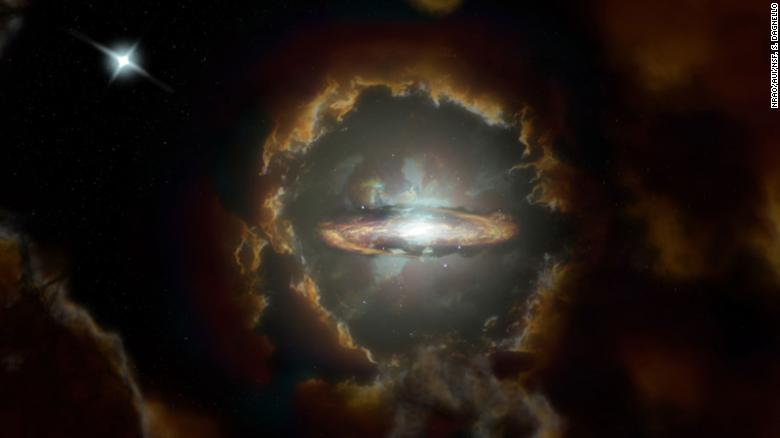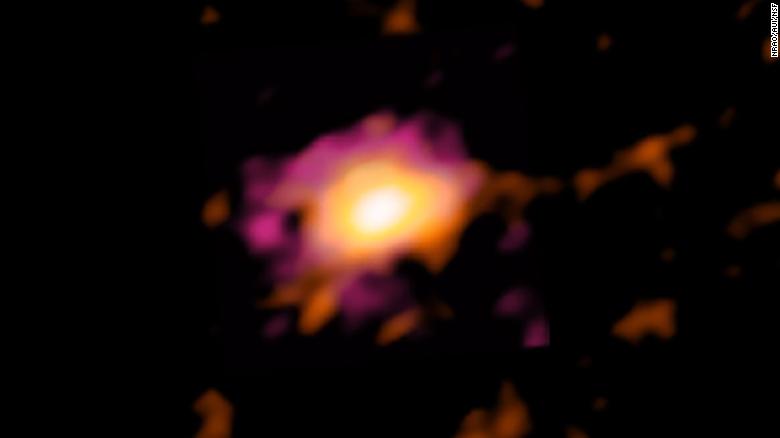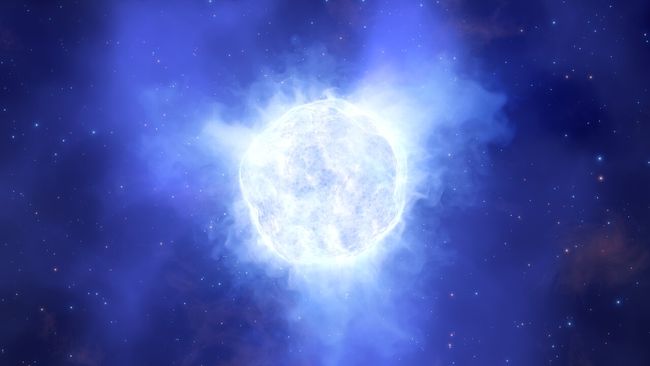|
|
Post by kirinke on May 14, 2020 13:06:21 GMT
Found another interesting article. Hope you enjoy it.
One-in-a-million: 'Super-Earth' discovered near center of our galaxy
Another day, another super-Earth? Not so fast. This one really is special. Calling it "incredibly rare," New Zealand astronomers say that the planet "is one of only a handful that have been discovered with both size and orbit comparable to that of Earth," according to a statement.
The research about the discovery was published recently in a study in the Astronomical Journal.
How does this distant world and its star compare to our neighborhood? According to the study, the super-Earth's host star is about 10% the mass of our sun, and the planet would have a mass somewhere between that of Earth and Neptune.
It would also orbit its star at a location between Venus and Earth.
However, as for life, or water, study authors say not to get our hopes up: "Although it’s not too much bigger than Earth, and orbiting its star at a similar distance, this planet would be very cold because its star is smaller than the sun and emits much less light," study co-author Michael Abrow of New Zealand's University of Canterbury told USA TODAY.
"Water could not exist in a liquid state and the likelihood of life would be very low," he said. "Only a very few planets have been detected that may have suitable conditions for life."
Another difference: Due to the host star having a smaller mass than our sun, the planet would have a "year" of approximately 617 days.
Study lead author Antonia Herrera-Martin, also of the University of Canterbury, said the planet was discovered using a technique called "gravitational microlensing."
“The combined gravity of the planet and its host star caused the light from a more distant background star to be magnified in a particular way," he said. "We used telescopes distributed around the world to measure the light-bending effect.”
More: 'Super Earth' planet could have right conditions for life
The microlensing effect is rare, he said, with only about one in a million stars in the galaxy being affected at any given time.
In addition, this type of observation does not repeat, and the probabilities of catching a planet at the same time are extremely low, Martin said.
|
|
|
|
Post by kirinke on May 18, 2020 13:37:20 GMT
A Black Hole’s Boomerangs
Astronomers have deciphered the dynamics of yet another great trick that monster black holes can play. In many galaxies, jets of energy are squeezed outward by the black hole that lurks at the center and go shooting off in opposite directions into space.
But in a few bizarre-looking galaxies, the jets take the form of four beams in the shape of an X. Now, radio astronomy observations have shown how that happens.
Astronomers have no trouble understanding how black holes — objects so dense that not even light can escape the tombstone grip of their gravity — can become the most luminous objects in the universe, powering quasars. The pressure in the fat, fiery swirl of doom that surrounds a black hole expels high-energy particles from the top and bottom of the doughnut.
But a galaxy known as PKS 2014-55 is different. This old, elliptical galaxy is about 800 million light-years from Earth in the constellation Telescopium, and its jets are shaped like two boomerangs placed back to back to form an X.
Why? Perhaps, some astronomers thought, the central black hole was wobbling, like a lawn sprinkler throwing jets in different directions. Or maybe a pair of supermassive black holes were colliding.
But observations by an international group of astronomers with a powerful new South African radio telescope, MeerKAT, have provided an alternate explanation.
The dynamics of the jets, it seems, more closely resemble those in an elaborate Las Vegas fountain, with water going up and down and flowing in designer configurations. In this case, superhot gas is being pumped up 2.5 million light-years into intergalactic space. It then cascades back and splashes sideways off the center of the galaxy, sculpting an X in the cosmos, as if marking a treasure.
“Material falls back and gets reflected around the center,” said Fernando Camilo, chief scientist of the South African Radio Astronomy Observatory, which built MeerKAT.
The team, led by William Cotton, an astronomer with the National Radio Astronomy Observatory in the United States, reported its results last week in the Monthly Notices of the Royal Astronomical Society.
Key to the results was the new MeerKAT radio telescope, an array of 64 antennas located in the Karoo desert in South Africa. Computers can combine the data from the individual dishes to create radio images with exquisite detail. MeerKAT was designed and built as a precursor to one of the great dream projects of astronomy, the Square Kilometer Array, a giant assembly of hundreds of radio dishes with a total collecting area of a square kilometer. Half of it is being built in South Africa and half in Australia.
“MeerKAT is one of a new generation of instruments whose power solves old puzzles even as it finds new ones,” Dr. Cotton said in a statement issued by the South African Radio Astronomy Observatory.
In their paper, the scientists described in detail how the fireworks in PKS 2014-55 work.
First, energetic material is launched outward in two opposite directions by the central black hole. But intergalactic space is not empty; it is filled with a thin hot gas. As the jet encounters this gas, it slows and eventually stops. Material from the stalled jet then begins to fall back down into the galaxy from which it came, accumulating around the edges of the main jets like mist tumbling down the outside of a fire hose.
Eventually, the return flow hits the galaxy itself, and the cloud of hot gas that typically inhabits the centers of old galaxies. The pressure of this gas deflects the flow of the returning streams, the way a pebble in a stream redirects the current.
Which way the flow goes from there, Dr. Camilo said, depends on how the ellipse of hot gas is oriented relative to the two returning hydrodynamic flows. In this case, the streams are again steered in opposite directions, creating the two boomerang-shaped features.
“It’s all quite neat,” Dr. Camilo said.
|
|
|
|
Post by kirinke on May 23, 2020 21:15:19 GMT
Astronomers find the Wolfe Disk, an unlikely galaxy, in the distant universe
(CNN)Astronomers have spotted a massive disk galaxy, not unlike our own, that formed 12.5 billion years ago when our 13.8 billion-year-old universe was only a tenth of its current age. But according to what scientists know about galaxy formation, this one has no business being in the distant universe.
This discovery is challenging how astronomers think about galaxy formation in the early universe.
It's known as Galaxy DLA0817g, but astronomers nicknamed it the Wolfe Disk after late astronomer Arthur M. Wolfe, former doctoral advisor to three of the study's four authors. It represents the most distant rotating disk galaxy they have ever observed, thanks to the Atacama Large Millimeter/submillimeter Array of telescopes in Chile known as ALMA.
According to their observations, the galaxy's disk has a mass of 70 billion times that of our sun. It's also rotating at 170 miles per second, which is similar to our Milky Way galaxy. But galaxies with stable, well-formed disks, like the Milky Way, formed gradually and appeared later in the universe's timeline, with some dated to 6 billion years after the Big Bang.
In the early days after the Big Bang, the universe was largely a blank slate. Eventually, this was followed by galaxy formation that was pretty messy. Small galaxies merged and crashed together along with hot gas clumps.
"Most galaxies that we find early in the universe look like train wrecks because they underwent consistent and often 'violent' merging," said Marcel Neeleman, lead study author and postdoctoral researcher at the Max Planck Institute for Astronomy in Heidelberg, Germany, in a statement. "These hot mergers make it difficult to form well-ordered, cold rotating disks like we observe in our present universe."
The study published this week in the journal Nature.
So how did a well-formed rotating disk galaxy appear during this turbulent period? This galaxy formed and grew, researchers concluded, in a different way, known as cold-mode accretion.
Much of what astronomers know about galaxy formation is based on hierarchy. In the beginning, halo-like structures of dark matter, a large, unseen component of the universe known by its effect on surrounding matter, drew in gas. Mergers created something larger where star formation was possible, and eventually, a galaxy was born.
The gas drawn in by the dark matter halos was heated by the collisions, and it would form a disk once it cooled — which could take place over billions of years.
Cold brew
But in the cold scenario, much cooler gas is drawn into a new galaxy and allows for quicker formation of a disk.
"We think the Wolfe Disk has grown primarily through the steady accretion of cold gas," said J. Xavier Prochaska, study coauthor and professor of astronomy and astrophysics of the University of California, Santa Cruz, in a statement. "Still, one of the questions that remains is how to assemble such a large gas mass while maintaining a relatively stable, rotating disk."
The researchers also used data from the Hubble Space Telescope and the National Science Foundation's Karl G. Jansky Very Large Array of radio antennae in New Mexico to understand what kind of star formation was occurring in the galaxy.
"The star formation rate in the Wolfe Disk is at least 10 times higher than in our own galaxy," explained Prochaska. "It must be one of the most productive disk galaxies in the early universe."
Neeleman and his colleagues first spotted the Wolfe Disk using ALMA in 2017 when light from a quasar passed through hydrogen gas around the galaxy and revealed it. A quasar, which looks a bit like a star through a telescope, is actually a remote object that emits a large amount of energy likely powered by matter falling on a black hole at the center of a galaxy. The light helped them identify this normal galaxy, rather than the direct light emitted by extremely bright galaxies.
Otherwise, distant galaxies are hard to observe because they're so faint. But this "absorption" of light method using quasars can happen when the telescopes, galaxy and quasar are in alignment, which is rare — unless galaxies like this were more common in the early universe.
"The fact that we found the Wolfe Disk using this method, tells us that it belongs to the normal population of galaxies present at early times," Neeleman said. "When our newest observations with ALMA surprisingly showed that it is rotating, we realized that early rotating disk galaxies are not as rare as we thought and that there should be a lot more of them out there. Thanks to ALMA, we now have unambiguous evidence that they occur as early as 1.5 billion years after the Big Bang."
Future research and observation is needed to understand how common this cold method of galaxy formation was in the early universe.
Artist's Rendition of the Wolf Disk
This ALMA image shows the Wolfe Disk in the distant universe.
|
|
|
|
Post by kirinke on Jun 9, 2020 22:01:08 GMT
More 'fast radio bursts' have been detected from a distant galaxy. This one has a repeating pattern.
More unexplained signals are coming from outer space, scientists report in a new study.
For only the second time ever, scientists have detected a radio signal from a distant galaxy that repeats at regular intervals.
The series of "fast radio bursts" – short-lived pulses of radio waves that come from across the universe – were detected for 90 days then stopped for a period of 67 days.
The same start-and-stop pattern then repeated every 157 days.
Kaustubh Rajwade of the University of Manchester in the U.K., who led the new research, said in a statement: "This is an exciting result as it is only the second system where we believe we see this modulation in burst activity. Detecting a periodicity provides an important constraint on the origin of the bursts."
This discovery provides an important clue to identifying the origin of these enigmatic bursts, which come from a dwarf galaxy that's some 3 billion light-years away from Earth.
The presence of a regular sequence in the burst activity could imply that the powerful bursts are linked to the orbital motion of a massive star, a neutron star or a black hole, according to the University of Manchester.
First discovered in 2007, fast radio bursts last only a few milliseconds, which makes it difficult to accurately determine where they come from.
"One of the greatest mysteries in astronomy right now is the origin of short, dramatic bursts of radio light seen across the universe," the Max Planck Institute for Radio Astronomy said in a statement earlier this year.
"Although they last for only a thousandth of a second, there are now hundreds of records of these enigmatic sources," the institute said.
Could it be aliens? Almost certainly not, the Massachusetts Institute of Technology said in a recent statement: "The signals are a sign of energetic events that are on the extreme scale of the cosmos. Even a highly intelligent species would be very unlikely to produce energies like this. And there is no detectable pattern so far that would suggest there’s a sentient hand at play."
Speaking about the new research, study co-author Duncan Lorimer of West Virginia University said that “this exciting discovery highlights how little we know about the origin of fast radio bursts."
The study was published Sunday in the peer-reviewed journal Monthly Notices of the Royal Astronomical Society.
 |
|
|
|
Post by kirinke on Jul 7, 2020 15:12:12 GMT
NASA's powerful Hubble space telescope has beamed back a striking photo of a 'fluffy' galaxy with a ghostly, empty center
NASA's most powerful space telescope, Hubble, captured a uniquely picturesque galaxy in a photo the agency released on Thursday.
The galaxy, called NGC 2775, is located 67 million light-years away and doesn't seem to be forming stars that much anymore. Astronomers can tell that's the case because of the relatively empty, clear bulge at the galaxy's center. When it was younger, the galaxy's middle region was likely bursting with activity as gas condensed into newborn stars. Now, however, all the gas seems to be used up.
The arms spinning around the galaxy's center are "flocculent" — fluffy and feathery-looking — due to dark lines of dust and puffs of gas clouds. Millions of young stars shine bright blue through the haze.
By contrast, other spiral galaxies — including the Milky Way — have more distinct arms where stars and gas are compressed.
Hubble is NASA's strongest telescope — but not for long
NASA launched Hubble into Earth's orbit in April 1990. Since then, the telescope has discovered new planets, revealed strange galaxies, and provided new insights into the nature of black holes. It also found that the universe is expanding more quickly than scientists imagined.
NASA/ESA
Upcoming space telescopes could return photos even more striking than Hubble's.
NASA's next such project, the James Webb Space Telescope (JWST), will use more advanced infrared cameras than any past telescope to image our galaxy.
"Even one image from Webb will be the highest-quality image ever obtained of the galactic center," Roeland van der Marel, an astronomer who worked on JWST's imaging tools, said in a 2019 press release.
NASA/Chris Gunn
Such images could help answer some of scientists' biggest questions about how our galaxy formed and how it evolves over time.
The upcoming telescope is fully assembled and now faces a long testing process in Northrop Grumman's California facilities before its launch date on March 30, 2021.
Additionally, the Nancy Grace Roman Space Telescope — named for the woman who made Hubble's launch possible — will have 100 times the view of Hubble. After it launches in the mid-2020s, it's expected to photograph thousands of new exoplanets and probe the nature of dark energy, a mysterious force that makes up 68% of the universe and drives its expansion.
NASA
Over the Roman Space Telescope's five-year lifetime, it will measure light from a billion galaxies and survey the inner Milky Way with the hope of finding about 2,600 new planets and photographing them. It will also help scientists test Albert Einstein's general theory of relativity.
Fluffy Galaxy in Question
Typical Spiral Galaxy in Comparison
Hubble in Orbit
Engineers and technicians working on the James Webb Space Telescope.
The field of view of the Hubble Space telescope compared to WFIRST.
|
|
|
|
Post by kirinke on Jul 15, 2020 11:07:15 GMT
You’ll Be Able to See Five Planets and the Moon Without a Telescope This Weekend
Here’s something to look forward to this weekend: Before sunrise on July 19, five planets–Mercury, Venus, Mars, Jupiter, and Saturn–and the crescent moon will all be visible in the sky at the same time. And better yet, you won’t even need a telescope to see them! The five planets and crescent moon will simultaneously be visible to the naked eye 45 minutes before sunrise on Sunday, July 19, astronomy educator Dr. Jeffrey Hunt wrote in a blog post. They’ll be curved across the morning sky, so you’ll want to “find a spot with clear horizons in the east-northeast and the southwest,” Hunt advises. How do you recognize which planet is which? Two hours before sunrise, you’ll already be able to spot Jupiter in the southwestern sky with the ringed planet Saturn above it and to the right. Mars, aka the red planet, will be visible in the southeastern horizon. Venus blazes in the eastern sky, and Mercury will be to the right of the moon–which will be very low in the east-northeast, reports Space.com. Although you don’t need a telescope, a pair of binoculars might help you spot the moon, Mercury, and Jupiter because of how low they will be in the sky. If you’re looking for helpful degree measurements or want to know how to set up your telescope for a closer look, check out more at When the Curves Line Up.
 |
|
|
|
Post by evileeyore on Jul 15, 2020 23:17:10 GMT
I don't think you posted this one...
|
|
|
|
Post by kirinke on Jul 18, 2020 13:10:39 GMT
Nice one! I did miss it. Thanks.
|
|
|
|
Post by kirinke on Aug 10, 2020 16:36:23 GMT
Dwarf planet Ceres is an ocean world: study

The dwarf planet Ceres -- long believed to be a barren space rock -- is an ocean world with reservoirs of sea water beneath its surface, the results of a major exploration mission showed Monday.
Ceres is the largest object in the asteroid belt between Mars and Jupiter and has its own gravity, enabling the NASA Dawn spacecraft to capture high-resolution images of its surface.
Now a team of scientists from the United States and Europe have analysed images relayed from the orbiter, captured around 35 kilometres (22 miles) from the asteroid.
They focused on the 20-million-year-old Occator crater and determined that there is an "extensive reservoir" of brine beneath its surface.
Several studies published Monday in the journals Nature Astronomy, Nature Geoscience and Nature Communications also shed further light on the dwarf planet, which was discovered by Italian polymath Giuseppe Piazzi in 1801.
Using infrared imaging, one team discovered the presence of the compound hydrohalite -- a material common in sea ice but which until now had never been observed off of Earth.
Maria Cristina De Sanctis, from Rome's Istituto Nazionale di Astrofisica said hydrohalite was a clear sign Ceres' used to have sea water.
"We can now say that Ceres is a sort of ocean world, as are some of Saturn's and Jupiter's moons," she told AFP.
The team said the salt deposits looked like they had built up within the last two million years -- the blink of an eye in space time.
This suggests that the brine may still be ascending from the planet's interior, something De Sanctis said could have profound implications in future studies.
"The material found on Ceres is extremely important in terms of astrobiology," she said.
"We know that these minerals are all essential for the emergence of life."
Writing in an accompanying comment article, Julie Castillo-Rogez, from the California Institute of Technology's Jet Propulsion Laboratory, said the discovery of hydrohalite was a "smoking gun" for ongoing water activity.
"That material is unstable on Ceres' surface, and hence must have been emplaced very recently," she said.
In a separate paper, US-based researchers analysed images of the Occator crater and found that its mounds and hills may have formed when water ejected by the impact of a meteor froze on the surface.
The authors said their findings showed that such water freezing processes "extend beyond Earth and Mars, and have been active on Ceres in the geologically recent past".
|
|
|
|
Post by mustrumridcully on Aug 27, 2020 11:20:49 GMT
I need to add this to my participated threads so I get reminded to check it out when something new is on.
|
|
|
|
Post by kirinke on Aug 28, 2020 0:46:45 GMT
Lol. Glad you like it. I figure we all need some science in our lives and space has always fascinated me. The thread is open for others to contribute.
|
|
|
|
Post by kirinke on Aug 28, 2020 0:51:48 GMT
Even the most "muddy" meteorites hold priceless artifacts from the very beginning of our solar system.
Rainbow meteorite discovered in Costa Rica may hold building blocks of life

A small, soft space rock smacked into Costa Rica on April 23, 2019. And it may have carried building blocks for life.
The washing machine-sized clay fireball broke up before landing, . Locals found shards scattered between two villages, La Palmera and Aguas Zarcas. And while meteorites turn up all over Earth, these shards were special; the asteroid that spawned them was a soft remnant of the early solar system, made from the dust from the spinning nebula that would ultimately form our solar system, formed in even older stars. And the meteorites that rained down from the event — collectively called Aguas Zarcas — belong to a rare class called carbonaceous chondrites, which form in the wee hours of the solar system's emergence and are typically packed with carbon. This particular space rock contains complex carbon compounds, likely including amino acids (which join to form proteins and DNA) and perhaps other, even more complex building blocks of life.
While other rocky chunks from the very early solar system became parts of planets, this one remained intact and changed over time only through sunlight-driven chemical reactions that spurred the creation of more and more complex chemical compounds.
An earlier meteor that exploded over Murchison, Australia, in 1969 had similar features. Amino acids discovered in its clay, Joshua Sokol reported in Science, helped spread the idea that life on Earth may have originated from chemicals delivered in meteorites. And like the Murchison meteorite, this Aguas Zarcas fragment contains dust from the ancient, earlier Milky Way, before our sun formed.
Studies of this new meteorite are still incomplete, Sokol wrote. But researchers are excited that they can examine it using modern techniques, looking for complex organic compounds —— maybe even proteins —— that even if they did once exist inside the Murchison meteorite have long since disappeared, degrading in Earth's atmosphere. (The Murchison meteorite very closely resembled Aguas Zarcas, and if Aguas Zarcas contained proteins then Murchison probably did as well, though the opportunity to detect them has been lost.) Already, there's evidence of amino acids in this Aguas Zarcas fragment not found elsewhere on Earth.
Aguas Zarcas shards may offer the most pristine samples yet of the early solar system and pre-solar dust cloud. But landing as they did in the Costa Rican rainforest, Sokol reported, there's still the possibility of contamination.
Down the road, even more pristine samples may become available. The Japanese Hayabusa2 probe, launched in 2014 with the goal of sampling the asteroid Ryugu, is already on its way back with Ryugu dust onboard, a sample that may contain carbonaceous chondrite, Sokol noted. And in 2023, NASA will return its own samples from a similar asteroid, Bennu, which Sokol reported is likely related to Aguas Zarcas.
"These asteroid scraps will be truly pristine, having never touched the atmosphere or sat atop rainforest soil," Sokol wrote.
But for now, Aguas Zarcas is the best source of spacefaring carbon compounds available.
Originally published on Live Science.
|
|
|
|
Post by kirinke on Oct 17, 2020 22:44:41 GMT
Why are galaxies different shapes?
By Donavyn Coffey - Live Science Contributor www.livescience.com/why-are-galaxies-different-shapes.html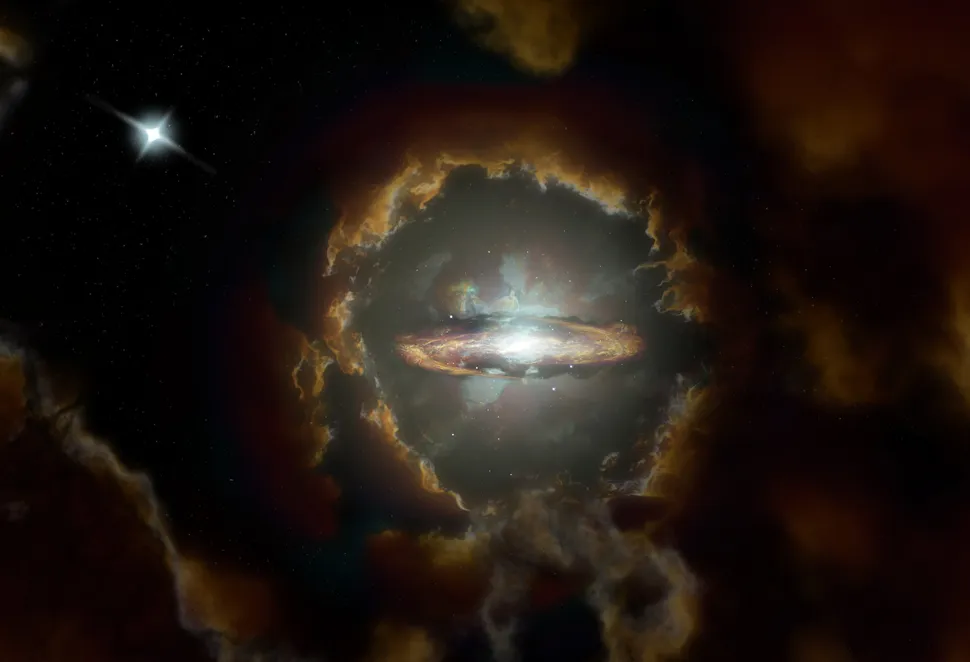 Look into the night sky and you'll glimpse the stars from hundreds of billions of galaxies. Some galaxies are swirling blue disks like our own Milky Way, others are red spheres or misshapen, clumpy messes or something in between. Why the different configurations? It turns out that a galaxy's shape tells us something about the events in that galaxy's ultra-long life. At the very basic level there are two classifications for galaxy shapes: disk and elliptical. A disk galaxy, also called a spiral galaxy, is shaped like a fried egg, said Cameron Hummels, theoretical astrophysicist at Caltech. These galaxies have a more spherical center, like the yolk, surrounded by a disk of gas and stars — the egg white. The Milky Way and our nearest galaxy neighbor Andromeda fall into this category. In theory, disk galaxies initially form from clouds of hydrogen. Gravity draws the gas particles together. As the hydrogen atoms draw closer, the cloud begins to rotate and their collective mass increases, which causes their gravitational force to also go up. Eventually, the gravity causes the gas to collapse into a swirling disk. Most of the gas is in the rim, where it feeds star formation. Edwin Hubble, who confirmed the existence of galaxies beyond our own only a century ago, called disk galaxies late-type galaxies because he suspected their shape meant they formed later in the history of the universe, according to NASA. Alternatively, elliptical galaxies — what Hubble called early-type galaxies — appear to be older. Instead of rotating, like disk galaxies, stars in elliptical galaxies have more random movement, according to Robert Bassett, an observational astrophysicist who studies galaxy evolution at Swinburne University in Melbourne, Australia. Elliptical galaxies are thought to be a product of a galaxy merger. When two galaxies of equal mass merge, their stars start to tug on one another with gravity, disrupting the stars' rotation and creating a more random orbit, Bassett said. Not every merger results in an elliptical galaxy. The Milky Way is actually quite old and large, but maintains its disk shape. It's been adding to its mass by simply drawing in dwarf galaxies, which are much smaller than our home galaxy, and collecting free gas from the universe. However, Andromeda, our disk-shaped sister galaxy, is actually headed straight for the Milky Way, Bassett told LiveScience. So billions of years from now, the two spiraling galaxies could merge and each of the duo's starry disks will offset the other's rotation, creating a more random elliptical galaxy. These mergers are far from instantaneous. They take hundreds of millions, even billions of years. In fact, there are ongoing mergers that are moving so slowly — from our perspective — that they appear static. "They've basically been in the exact same state, unchanged for all of human civilization," Bassett said. Hubble gave these galaxies their own classification — irregular galaxies. To look at them, "they are usually a mess with multiple components," Hummels said. "Irregular galaxies just look like a big train wreck," Bassett added.
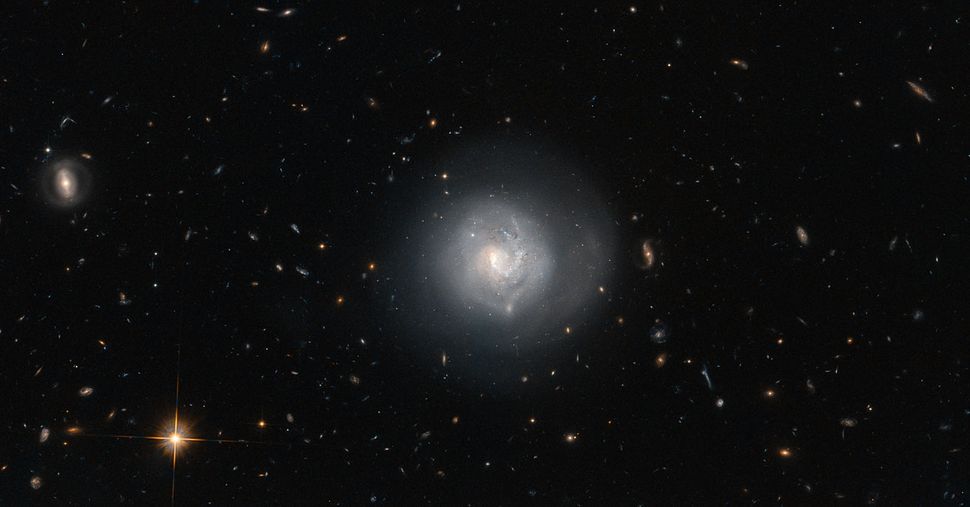
Finally, a less common shape, lenticular galaxies seem to be a mix between an elliptical and a disk galaxy. It may be, Bassett said, that when a disk galaxy uses up all its gas and can't form any new stars the existing stars begin to interact. Their gravitational tug on one another creates a shape that looks like a lentil — kind of elliptical but still a rotating disk.
What scientists have uncovered so far about galaxies and their 3D shapes has been inferred using thousands of 2D images and by relying on other properties, such as galaxy color and motion, to fill in the blanks, Bassett said.
For example, the younger age of disk galaxies is corroborated by their blue color. Blue stars are generally larger, and they burn faster and hotter (blue light has a higher frequency and is thus more energetic than red light). Meanwhile, elliptical galaxies are filled with older stars — called red dwarfs — that aren't burning quite as hot or fast.
Still, despite all we have learned about the massive celestial structures around us, there's still so much we don't know, Hummels said.
"Galaxy formation and evolution is one of the biggest open questions in the field of astronomy and astrophysics," Hummels said.
|
|
|
|
Post by evileeyore on Oct 18, 2020 4:24:09 GMT
|
|
zappo
New Member

Posts: 29
|
Post by zappo on Oct 18, 2020 6:34:40 GMT
We really need to figure out a way to clean up space debris.
|
|



